One of students in my Introduction to New Media class at Fordham University, Kevin Levin, brought this popular bit of internet culture to my attention, the Keep Calm and Carry On poster. I don't know how I missed it!
 This came up in regard to our class discussion of memes, itself a concept made popular by the internet, so let me say a few words on that topic (and if you've heard me go on about this before, feel free to skip ahead).
This came up in regard to our class discussion of memes, itself a concept made popular by the internet, so let me say a few words on that topic (and if you've heard me go on about this before, feel free to skip ahead).
As you may know, the concept of the meme was introduced by British scientist Richard Dawkins in his 1974 book, The Selfish Gene. There, Dawkins made the novel argument that evolution is driven by genes rather than organisms, that genes are biological replicators, and organisms are mechanisms by which genes reproduce themselves. That reverses the more common view that genes are the mechanism by which organisms reproduce themselves. This view, I might add, while intriguing, has been solidly criticized and, in my view, disproved by the arguments put forth by Terrence Deacon in his recent book, Incomplete Nature.
In any event, Dawkins mostly was writing about genes, but also threw in a chapter on the concept of ideas having a life of their own, being in effect self-replicators. To follow his line of thought, the idea of memes spread from his thoughts to his book, and then reproduced itself when I read it, the copy or offspring of the idea taking up residence in my brain. And whenever I tell someone else about memes, assuming they haven't heard about it before, it's replicated itself once more, again and again and again.
This idea did not become popular, though, and therefore was not a terribly successful meme itself, until the internet. Once email became popular, and people started forwarding interesting items to a bunch of other people, and they in turn forwarded the item to still more, and so on and so on, all with the forwarding history accumulated within the email, so you can see how the message has spread, and maybe even have your item sent back to you after several forwards, only then could people actually see the spread of ideas at work and relate it to the concept of the meme.
At that point, folks starting talking about memetics as the science of memes, and also invoked the more familiar term for self-replicating genetic matter, the virus. The idea of a computer virus became well known in the early days of the internet, as connectivity was the key to the spread of such malware (to use a newer, and less metaphorical term). The computer virus, however, was not simply a replicator, but rather a program that also carries out functions that are unwanted and harmful, like deleting your hard drive or transmitting information from your computer to some other location. A program that does nothing more than replicating itself is called a worm, which, while not actively harmful, could crash systems by filling up all available memory and data storage capacity. But despite the fact that there is more to computer viruses than replication, the metaphor of the virus got picked up as an alternative to meme, especially in the adjective form of going viral, viral marketing, etc.
Now, as a media ecology scholar, I have to add that the concept of the meme, while popular, is problematic. In one sense, there is nothing new about studying the spread of ideas. There is a longstanding research area known as diffusion of innovations, sometime social diffusion, and it is closely related to ideas such as two-step flow theory in mass communication (the idea that ideas spread by the mass media do not directly influence the attitudes, opinions, and behaviors of individuals, but instead are mediated by influential individuals referred to as opinion leaders), by the sociological study of rumors, not to mention studies of folklore , and also research into social networking.
So there is nothing new about memes except for the biological metaphor, and the metaphor itself is problematic. Genes are a logical construct, a way of talking about the behavior of actual genetic material, you know, chromosones, and those amazing double helix molecules of DNA. In other words, genes are not real, in the sense that DNA is real, which is to say that they are not concrete phenomena. The only sense in which genes can be said to exist is insofar as they are based on a material medium (in this case, the medium is the molecule), they don't exist in a vacuum, in the ether, as an ideal form as it were.
But when it comes to memes, as they were originally presented by Dawkins, and as the idea has been picked up by others, the material basis that is taken for granted in regard to genetics is either overlooked, forgotten, or simply thrown out of the window. So in memetics, the talk typically is of ideas having an existence independent of any physical phenomenon. This is where media ecology is essential, because we need to remember that there is no content without a medium. Indeed, we need the medium to begin with, to provide the raw material out of which to form the content.
Now, let me just pull back a little and say that this does not mean that nothing interesting has come from the discussion of memes. It can be useful, it's certainly a compelling metaphor, and I myself have used the term on occasion. But it needs to be used with caution, and understanding of the larger context.
A further complication has been the appearance of meme generators, which I assume are connected to the sudden rise of Pinterest in the social media world to a position only surpassed by Facebook and Twitter. Of course, Facebook itself also has a lot to do with it, so even if you're only on Facebook, you may have noticed an explosion of these visual images plus text, all very formulaic. For example, there's the still from the first Lord of the Rings film, where the original line in the movie was, "one does not simply walk into Mordor," and here are some generated memes:
You get the picture, I'm sure. And as for memes having a material basis, it's clear that these types are entirely based on the specific medium of personal computers and the internet, and would not exist in this way without them. The Keep Calm and Carry On meme has also existed in similar form, and well before the advent of meme generators, which after all simply make it easier and more accessible to do the kinds of things that folks have already been doing with Photoshop (and that has been made famous by sites like lolcats). So here are some variations on the the Keep Calm theme:
And on and on and on. Now, when it comes to the study of rumors and folklore, one of the most fundamental, and interesting questions, is where did it begin? Who started the ball rolling? How did it spread? Well, in this instance, there is an answer, and it is quite fascinating, involving as it does an accidental find, a kind of revival, and the power of the internet. It's all explained in this video that my student Kevin turned me on to, that I want to share with you now, The Story of Keep Calm and Carry On:
And to be fair, here's the write-up from YouTube:
The downside is that it makes one a bit stiff, overly formal, and quite a bit repressed. That is the White Anglo-Saxon Protestant stereotype, and while we here in the United States are not as extreme as the Brits, we do tend to share in that cultural trait, even if we're Catholic or Jewish, from varying ethnic backgrounds, and even non-white. You don't have to be a WASP to love this behavior pattern, but it is associated with affluence and being a member of the social elite, or trying to be part of that class. Personally, I admit to having some of that sensibility, and oft times wishing I had more, but I'm also grateful that I have the freedom to move back and forth between that type of behavior and other alternatives.
I should also note that the current fascination with Keep Calm and Carry On clearly involves a bit of irony. The propaganda value of the poster and saying are clear enough, and folks today cannot and would not take it as seriously as it would have been taken back during the Second World War. To take a page from Neil Postman, the poster originally had a bit of an Orwellian cast to it, but now is used in a Huxleyian mode, as an amusement.
But it's not either/or, I hasten to add. Nowadays, we can have our cake and eat it to, be ironic and be ironic about being ironic, which is almost like being serious, except we're being serious while being ironic at the same time. It's nonlinear, non-Aristotelian, as Korzybski would have it, and what some would term postmodern. But media ecology scholars understand that to mean that it is a product of the electronic age.
So, anyway, after seeing that video, it hit me that the motto used by the science fiction humorist Douglas Adams for his Hitchhiker's Guide to the Galaxy, Don't Panic, comes from the same sensibility. If you're not familiar with the work, it started as a BBC radio program, then was turned into a series of novels, then into a TV miniseries (again BBC), and then adapted into a motion picture somewhat less than faithfully. The film is ok, but the novels and recordings are brilliant comedy, in my opinion. Sadly, Douglas Adams was taken from this world much too soon.
In case you're not familiar with the Hitchhiker's Guide, and I can't imagine why you wouldn't be, I was pleasantly surprised to find over on YouTube the BBC television adaptation, so here is the first 9 minutes for your viewing pleasure. But if you're the impatient type, the bit about Don't Panic comes up during the first 2 minutes:
So yes, it's very British humor, and that was always very apparent, but I have to confess that the very British quality of the phrase Don't Panic simply never occurred to me until I watched the video about Keep Calm and Carry On. Maybe I'm just a little slow on the uptake, maybe it's just that Don't Panic is more common to our shared Anglo-American culture than Keep Calm and Carry On?
Or maybe there is something altogether universal about Don't Panic after all, as it never quite pays to lose your cool, at least not to that extent. But, on the other hand, there is something that seems to be unavoidably specific to Keep Calm and Carry On. Funny how much difference it makes to take similar sentiments and phrase them in negative and positive terms. To avoid the negative seems universal, to promote a positive comes across as particular.
Well, all this speculation is perhaps more than you care for, and maybe it's just me, but I won't worry about it. No, I think I will just keep calm, don't panic, and keep on carrying on...
 This came up in regard to our class discussion of memes, itself a concept made popular by the internet, so let me say a few words on that topic (and if you've heard me go on about this before, feel free to skip ahead).
This came up in regard to our class discussion of memes, itself a concept made popular by the internet, so let me say a few words on that topic (and if you've heard me go on about this before, feel free to skip ahead).As you may know, the concept of the meme was introduced by British scientist Richard Dawkins in his 1974 book, The Selfish Gene. There, Dawkins made the novel argument that evolution is driven by genes rather than organisms, that genes are biological replicators, and organisms are mechanisms by which genes reproduce themselves. That reverses the more common view that genes are the mechanism by which organisms reproduce themselves. This view, I might add, while intriguing, has been solidly criticized and, in my view, disproved by the arguments put forth by Terrence Deacon in his recent book, Incomplete Nature.
In any event, Dawkins mostly was writing about genes, but also threw in a chapter on the concept of ideas having a life of their own, being in effect self-replicators. To follow his line of thought, the idea of memes spread from his thoughts to his book, and then reproduced itself when I read it, the copy or offspring of the idea taking up residence in my brain. And whenever I tell someone else about memes, assuming they haven't heard about it before, it's replicated itself once more, again and again and again.
This idea did not become popular, though, and therefore was not a terribly successful meme itself, until the internet. Once email became popular, and people started forwarding interesting items to a bunch of other people, and they in turn forwarded the item to still more, and so on and so on, all with the forwarding history accumulated within the email, so you can see how the message has spread, and maybe even have your item sent back to you after several forwards, only then could people actually see the spread of ideas at work and relate it to the concept of the meme.
At that point, folks starting talking about memetics as the science of memes, and also invoked the more familiar term for self-replicating genetic matter, the virus. The idea of a computer virus became well known in the early days of the internet, as connectivity was the key to the spread of such malware (to use a newer, and less metaphorical term). The computer virus, however, was not simply a replicator, but rather a program that also carries out functions that are unwanted and harmful, like deleting your hard drive or transmitting information from your computer to some other location. A program that does nothing more than replicating itself is called a worm, which, while not actively harmful, could crash systems by filling up all available memory and data storage capacity. But despite the fact that there is more to computer viruses than replication, the metaphor of the virus got picked up as an alternative to meme, especially in the adjective form of going viral, viral marketing, etc.
Now, as a media ecology scholar, I have to add that the concept of the meme, while popular, is problematic. In one sense, there is nothing new about studying the spread of ideas. There is a longstanding research area known as diffusion of innovations, sometime social diffusion, and it is closely related to ideas such as two-step flow theory in mass communication (the idea that ideas spread by the mass media do not directly influence the attitudes, opinions, and behaviors of individuals, but instead are mediated by influential individuals referred to as opinion leaders), by the sociological study of rumors, not to mention studies of folklore , and also research into social networking.
So there is nothing new about memes except for the biological metaphor, and the metaphor itself is problematic. Genes are a logical construct, a way of talking about the behavior of actual genetic material, you know, chromosones, and those amazing double helix molecules of DNA. In other words, genes are not real, in the sense that DNA is real, which is to say that they are not concrete phenomena. The only sense in which genes can be said to exist is insofar as they are based on a material medium (in this case, the medium is the molecule), they don't exist in a vacuum, in the ether, as an ideal form as it were.
But when it comes to memes, as they were originally presented by Dawkins, and as the idea has been picked up by others, the material basis that is taken for granted in regard to genetics is either overlooked, forgotten, or simply thrown out of the window. So in memetics, the talk typically is of ideas having an existence independent of any physical phenomenon. This is where media ecology is essential, because we need to remember that there is no content without a medium. Indeed, we need the medium to begin with, to provide the raw material out of which to form the content.
Now, let me just pull back a little and say that this does not mean that nothing interesting has come from the discussion of memes. It can be useful, it's certainly a compelling metaphor, and I myself have used the term on occasion. But it needs to be used with caution, and understanding of the larger context.
A further complication has been the appearance of meme generators, which I assume are connected to the sudden rise of Pinterest in the social media world to a position only surpassed by Facebook and Twitter. Of course, Facebook itself also has a lot to do with it, so even if you're only on Facebook, you may have noticed an explosion of these visual images plus text, all very formulaic. For example, there's the still from the first Lord of the Rings film, where the original line in the movie was, "one does not simply walk into Mordor," and here are some generated memes:
You get the picture, I'm sure. And as for memes having a material basis, it's clear that these types are entirely based on the specific medium of personal computers and the internet, and would not exist in this way without them. The Keep Calm and Carry On meme has also existed in similar form, and well before the advent of meme generators, which after all simply make it easier and more accessible to do the kinds of things that folks have already been doing with Photoshop (and that has been made famous by sites like lolcats). So here are some variations on the the Keep Calm theme:
And on and on and on. Now, when it comes to the study of rumors and folklore, one of the most fundamental, and interesting questions, is where did it begin? Who started the ball rolling? How did it spread? Well, in this instance, there is an answer, and it is quite fascinating, involving as it does an accidental find, a kind of revival, and the power of the internet. It's all explained in this video that my student Kevin turned me on to, that I want to share with you now, The Story of Keep Calm and Carry On:
And to be fair, here's the write-up from YouTube:
To find out more about Barter Books visithttp://www.barterbooks.co.uk to download the 'Keep Calm' iphone app visit http://bit.ly/keepcalmappNow, what I want to emphasize at this point is how very, very British this all is. Stiff upper lip, and all that. I mean, it sums up much of what is distinctive about English culture, the emphasis on rationality, determinism, sheer grit. Keep calm and carry on indeed!
A short film that tells the story behind the 'Keep Calm and Carry On' poster. Its origins at the beginning of WWII and its rediscovery in a bookshop in England in 2000, becoming one of the iconic images of the 21st century. Film, music, script and narration by Temujin Doran. http://www.studiocanoe.com/index.php?... Concept and production by Nation. http://www.wearenation.co.uk/
The downside is that it makes one a bit stiff, overly formal, and quite a bit repressed. That is the White Anglo-Saxon Protestant stereotype, and while we here in the United States are not as extreme as the Brits, we do tend to share in that cultural trait, even if we're Catholic or Jewish, from varying ethnic backgrounds, and even non-white. You don't have to be a WASP to love this behavior pattern, but it is associated with affluence and being a member of the social elite, or trying to be part of that class. Personally, I admit to having some of that sensibility, and oft times wishing I had more, but I'm also grateful that I have the freedom to move back and forth between that type of behavior and other alternatives.
I should also note that the current fascination with Keep Calm and Carry On clearly involves a bit of irony. The propaganda value of the poster and saying are clear enough, and folks today cannot and would not take it as seriously as it would have been taken back during the Second World War. To take a page from Neil Postman, the poster originally had a bit of an Orwellian cast to it, but now is used in a Huxleyian mode, as an amusement.
But it's not either/or, I hasten to add. Nowadays, we can have our cake and eat it to, be ironic and be ironic about being ironic, which is almost like being serious, except we're being serious while being ironic at the same time. It's nonlinear, non-Aristotelian, as Korzybski would have it, and what some would term postmodern. But media ecology scholars understand that to mean that it is a product of the electronic age.
So, anyway, after seeing that video, it hit me that the motto used by the science fiction humorist Douglas Adams for his Hitchhiker's Guide to the Galaxy, Don't Panic, comes from the same sensibility. If you're not familiar with the work, it started as a BBC radio program, then was turned into a series of novels, then into a TV miniseries (again BBC), and then adapted into a motion picture somewhat less than faithfully. The film is ok, but the novels and recordings are brilliant comedy, in my opinion. Sadly, Douglas Adams was taken from this world much too soon.
In case you're not familiar with the Hitchhiker's Guide, and I can't imagine why you wouldn't be, I was pleasantly surprised to find over on YouTube the BBC television adaptation, so here is the first 9 minutes for your viewing pleasure. But if you're the impatient type, the bit about Don't Panic comes up during the first 2 minutes:
So yes, it's very British humor, and that was always very apparent, but I have to confess that the very British quality of the phrase Don't Panic simply never occurred to me until I watched the video about Keep Calm and Carry On. Maybe I'm just a little slow on the uptake, maybe it's just that Don't Panic is more common to our shared Anglo-American culture than Keep Calm and Carry On?
Or maybe there is something altogether universal about Don't Panic after all, as it never quite pays to lose your cool, at least not to that extent. But, on the other hand, there is something that seems to be unavoidably specific to Keep Calm and Carry On. Funny how much difference it makes to take similar sentiments and phrase them in negative and positive terms. To avoid the negative seems universal, to promote a positive comes across as particular.
Well, all this speculation is perhaps more than you care for, and maybe it's just me, but I won't worry about it. No, I think I will just keep calm, don't panic, and keep on carrying on...
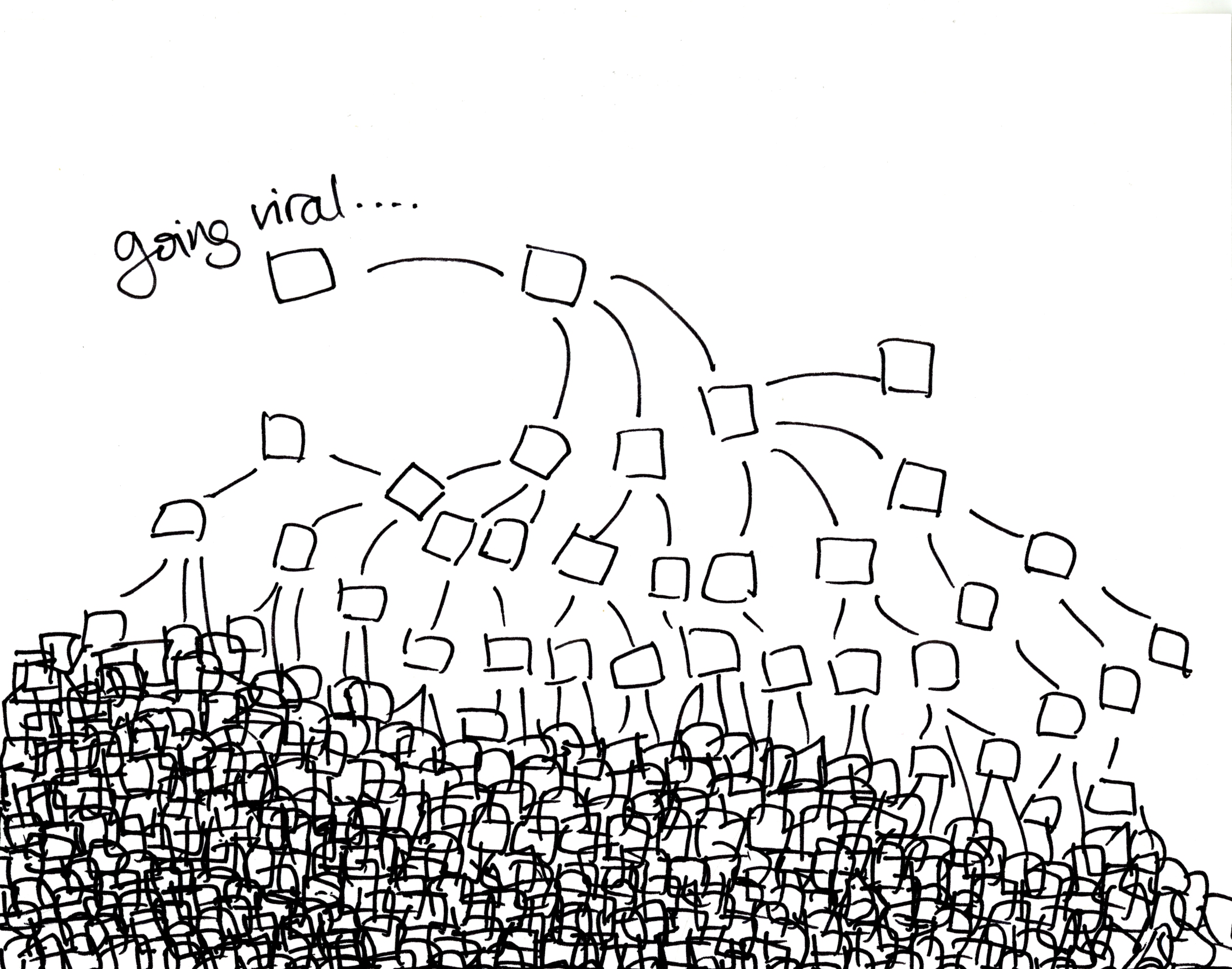
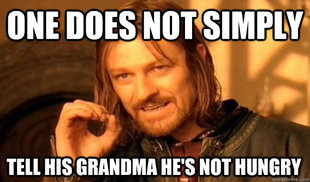
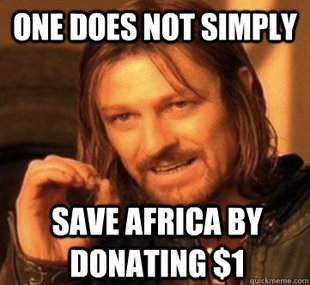
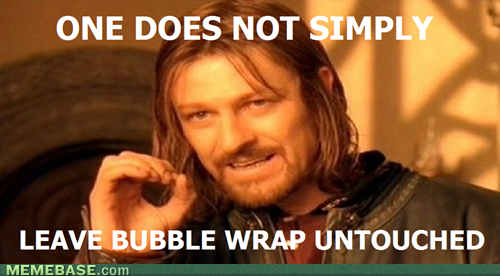
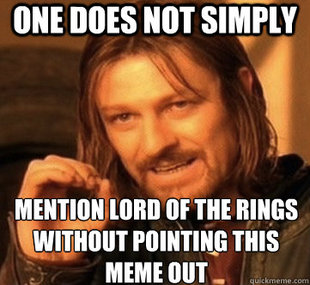















No comments:
Post a Comment